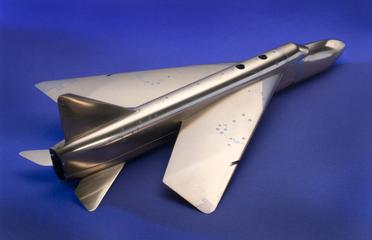
Twin cylinder aeronautical steam engine built by John Stringfellow
- maker:
- John Stringfellow
Twin cylinder aeronautical steam engine built by John Stringfellow, Chard, Somerset, England, 1871. The engine was built for use during the Siege of Paris.
This engine was built by John Stringfellow at the time of the Siege of Paris during the Franco-Prussian War of 1870-71. The city lay encircled by Prussian forces, and a way had to be found of getting messages in and out of the city, above the lines of the besieging force. Stringfellow, with his reputation in the field, was commissioned to construct a small engine to power a suitably sized airship. Some accounts suggest that the engine originally had only a single cylinder and was subsequently doubled, and some evidence in the differences in design detail of the two engines is offered as evidence, but this was not entirely clear on initial inspection and would take closer examination to ascertain for sure. Before the engine could be completed, Paris surrendered to the Prussians, and the need for the engine evaporated.
The engine is a very rare example of a type built by a recognised pioneer in the field of powered flight and as such is very important. What adds value to the engine is the powerful political story that surrounds it. Far from the rational, measured development process that accompanies many types of technology, here is an artefact the construction of which was initiated in an atmosphere of desperate military struggle, political turmoil and considerable suffering during the Siege of Paris. The contrast with the quiet town of Chard in Somerset cannot have been lost on as perceptive a man as Stringfellow: as he built the engine, and knowing its intended use, he must have considered the circumstances it might be employed under, and would have had to imagine the demands they would place on his creation. Perhaps this lends credibility to the idea that the engine was doubled in the course of construction, as Stringfellow realised that he had to maximise power output to allow the capability to move and manoeuvre hard and fast, while keeping the machine as light as possible. This is speculation, but the engine remains an outstanding example of an early and critically important technology constructed under the most demanding circumstances imaginable.
Details
- Category:
- Aeronautics
- Object Number:
- 2013-204
- Materials:
- iron (wrought), iron (cast) and brass (copper, zinc alloy)
- Measurements:
-
overall: 300 mm x 780 mm (across the crankshaft) x 940 mm, 55kg (estimated wt)
- credit:
- Purchased via eBay, James Carstairs




